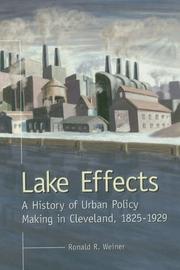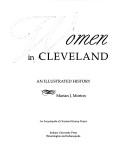| Listing 1 - 10 of 15 | << page >> |
Sort by
|
Periodical
Abstract | Keywords | Export | Availability | Bookmark
 Loading...
Loading...Choose an application
- Reference Manager
- EndNote
- RefWorks (Direct export to RefWorks)
Cleveland (Ohio) --- Cuyahoga County (Ohio) --- Ohio --- Cleveland. --- Klivlend (Ohio) --- City of Cleveland (Ohio) --- South Brooklyn (Ohio)
Periodical
Abstract | Keywords | Export | Availability | Bookmark
 Loading...
Loading...Choose an application
- Reference Manager
- EndNote
- RefWorks (Direct export to RefWorks)
Cleveland (Ohio) --- Cuyahoga County (Ohio) --- Ohio --- Cleveland. --- Klivlend (Ohio) --- City of Cleveland (Ohio) --- South Brooklyn (Ohio)
Periodical
Abstract | Keywords | Export | Availability | Bookmark
 Loading...
Loading...Choose an application
- Reference Manager
- EndNote
- RefWorks (Direct export to RefWorks)
Cleveland (Ohio) --- Cuyahoga County (Ohio) --- Ohio --- Cleveland. --- Klivlend (Ohio) --- City of Cleveland (Ohio) --- South Brooklyn (Ohio)
Book
ISBN: 1610756010 1682260186 9781610756013 9781682260180 Year: 2017 Publisher: Fayetteville
Abstract | Keywords | Export | Availability | Bookmark
 Loading...
Loading...Choose an application
- Reference Manager
- EndNote
- RefWorks (Direct export to RefWorks)
"Black Power! It was a phrase that consumed the American imagination in the 1960's and 70's and inspired a new agenda for black freedom. Dynamic and transformational, the black power movement embodied more than media stereotypes of gun-toting, dashiki-wearing black radicals; the movement opened new paths to equality through political and economic empowerment. In Harambee City, Nishani Frazier chronicles the rise and fall of black power within the Congress of Racial Equality (CORE) by exploring the powerful influence of the Cleveland CORE chapter. Frazier explores the ways that black Clevelanders began to espouse black power ideals including black institution building, self-help, and self-defense. These ideals challenged CORE's philosophy of interracial brotherhood and nonviolent direct action, spawning ideological ambiguities in the Cleveland chapter. Later, as Cleveland CORE members rose to national prominence in the organization, they advocated an open embrace of black power and encouraged national CORE to develop a notion of black community uplift that emphasized economic populism over political engagement. Not surprisingly, these new empowerment strategies found acceptance in Cleveland. By providing an understanding of the tensions between black power and the mainstream civil rights movement as they manifested themselves as both local and national forces, Harambee City sheds new light on how CORE became one of the most dynamic civil rights organizations in the black power era."--Publisher's description.
Congress of Racial Equality. --- Cleveland (Ohio) --- United States --- Politics and government --- Race relations --- History --- Klivlend (Ohio) --- Cleveland. --- City of Cleveland (Ohio) --- South Brooklyn (Ohio)
Periodical
Abstract | Keywords | Export | Availability | Bookmark
 Loading...
Loading...Choose an application
- Reference Manager
- EndNote
- RefWorks (Direct export to RefWorks)
Commerce. --- Economic history. --- Cleveland (Ohio) --- Ohio --- Commerce --- Economic conditions --- History, Economic --- Trade --- Industries --- Cleveland. --- Klivlend (Ohio) --- Economics --- Business --- Transportation --- South Brooklyn (Ohio) --- City of Cleveland (Ohio) --- Traffic (Commerce) --- Merchants
Book
ISBN: 1280466332 9786610466337 0803253990 9780803253995 0803254741 9780803254749 9781280466335 6610466335 Year: 2006 Publisher: Lincoln University of Nebraska Press
Abstract | Keywords | Export | Availability | Bookmark
 Loading...
Loading...Choose an application
- Reference Manager
- EndNote
- RefWorks (Direct export to RefWorks)
Working class --- Catholics --- Christians --- Commons (Social order) --- Labor and laboring classes --- Laboring class --- Labouring class --- Working classes --- Social classes --- Labor --- Employment --- Mackall, Joe. --- Mackall, Joseph --- Cleveland (Ohio) --- Klivlend (Ohio) --- Cleveland. --- City of Cleveland (Ohio) --- South Brooklyn (Ohio)
Book
ISBN: 1978809956 1978809972 1978809948 Year: 2020 Publisher: New Brunswick, New Jersey : Rutgers University Press,
Abstract | Keywords | Export | Availability | Bookmark
 Loading...
Loading...Choose an application
- Reference Manager
- EndNote
- RefWorks (Direct export to RefWorks)
This volume gathers an array of voices to tell the stories of Cleveland’s twentieth century Jewish community. Strong and stable after an often turbulent century, the Jews of Cleveland had both deep ties in the region and an evolving and dynamic commitment to Jewish life. The authors present the views and actions of community leaders and everyday Jews who embodied that commitment in their religious participation, educational efforts, philanthropic endeavors, and in their simple desire to live next to each other in the city’s eastern suburbs. The twentieth century saw the move of Cleveland’s Jews out of the center of the city, a move that only served to increase the density of Jewish life. The essays collected here draw heavily on local archival materials and present the area’s Jewish past within the context of American and American Jewish studies.
Jews --- Hebrews --- Israelites --- Jewish people --- Jewry --- Judaic people --- Judaists --- Ethnology --- Religious adherents --- Semites --- Judaism --- History. --- Cleveland (Ohio) --- Klivlend (Ohio) --- Cleveland. --- City of Cleveland (Ohio) --- South Brooklyn (Ohio) --- Ethnic relations.

ISBN: 0814272959 0814209890 Year: 2005 Publisher: Columbus : Ohio State University Press,
Abstract | Keywords | Export | Availability | Bookmark
 Loading...
Loading...Choose an application
- Reference Manager
- EndNote
- RefWorks (Direct export to RefWorks)
Urban policy --- History --- Cleveland (Ohio) --- Politics and government --- Cities and state --- Urban problems --- City and town life --- Economic policy --- Social policy --- Sociology, Urban --- City planning --- Urban renewal --- Klivlend (Ohio) --- Cleveland. --- City of Cleveland (Ohio) --- South Brooklyn (Ohio)

ISBN: 0253069076 0253328969 Year: 1995 Publisher: Bloomington : Indiana University Press,
Abstract | Keywords | Export | Availability | Bookmark
 Loading...
Loading...Choose an application
- Reference Manager
- EndNote
- RefWorks (Direct export to RefWorks)
Frau --- Women. --- Social conditions --- Femmes --- Women --- Histoire. --- History. --- Cleveland, Ohio --- Ohio --- Cleveland (Ohio) --- Social conditions. --- Human females --- Wimmin --- Woman --- Womon --- Womyn --- Females --- Human beings --- Femininity --- Erwachsene Frau --- Weib --- Weibliche Erwachsene --- Frauen --- Erwachsener --- Weiblichkeit --- Social and moral questions --- Klivlend (Ohio) --- Cleveland. --- City of Cleveland (Ohio) --- South Brooklyn (Ohio) --- Greater Cleveland, Ohio
Book
ISBN: 0801455650 0801455669 9780801455667 9780801453618 0801453615 1336284293 9780801455650 Year: 2015 Publisher: Ithaca, NY
Abstract | Keywords | Export | Availability | Bookmark
 Loading...
Loading...Choose an application
- Reference Manager
- EndNote
- RefWorks (Direct export to RefWorks)
In the 1960's, Cleveland suffered through racial violence, spiking crime rates, and a shrinking tax base, as the city lost jobs and population. Rats infested an expanding and decaying ghetto, Lake Erie appeared to be dying, and dangerous air pollution hung over the city. Such was the urban crisis in the "Mistake on the Lake." When the Cuyahoga River caught fire in the summer of 1969, the city was at its nadir, polluted and impoverished, struggling to set a new course. The burning river became the emblem of all that was wrong with the urban environment in Cleveland and in all of industrial America. Carl Stokes, the first African American mayor of a major U.S. city, had come into office in Cleveland a year earlier with energy and ideas. He surrounded himself with a talented staff, and his administration set new policies to combat pollution, improve housing, provide recreational opportunities, and spark downtown development. In Where the River Burned, David Stradling and Richard Stradling describe Cleveland's nascent transition from polluted industrial city to viable service city during the Stokes administration. The story culminates with the first Earth Day in 1970, when broad citizen engagement marked a new commitment to the creation of a cleaner, more healthful and appealing city. Although concerned primarily with addressing poverty and inequality, Stokes understood that the transition from industrial city to service city required massive investments in the urban landscape. Stokes adopted ecological thinking that emphasized the connectedness of social and environmental problems and the need for regional solutions. He served two terms as mayor, but during his four years in office Cleveland's progress fell well short of his administration's goals. Although he was acutely aware of the persistent racial and political boundaries that held back his city, Stokes was in many ways ahead of his time in his vision for Cleveland and a more livable urban America.
Community development --- City planning --- Urban renewal --- Cities and towns --- Civic planning --- Land use, Urban --- Model cities --- Redevelopment, Urban --- Slum clearance --- Town planning --- Urban design --- Urban development --- Urban planning --- Land use --- Planning --- Art, Municipal --- Civic improvement --- Regional planning --- Urban policy --- Renewal, Urban --- Urban redevelopment --- Urban renewal projects --- Regional development --- Economic assistance, Domestic --- Social planning --- Environmental aspects --- Government policy --- Management --- Citizen participation --- Stokes, Carl. --- Cleveland (Ohio) --- Klivlend (Ohio) --- Cleveland. --- City of Cleveland (Ohio) --- South Brooklyn (Ohio) --- Environmental conditions. --- Politics and government
| Listing 1 - 10 of 15 | << page >> |
Sort by
|

 Search
Search Feedback
Feedback About UniCat
About UniCat  Help
Help News
News